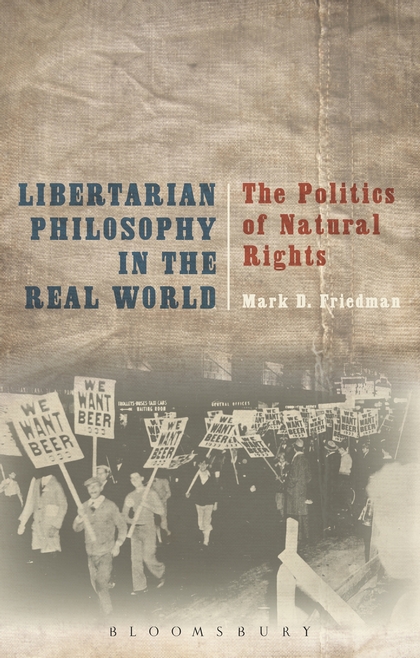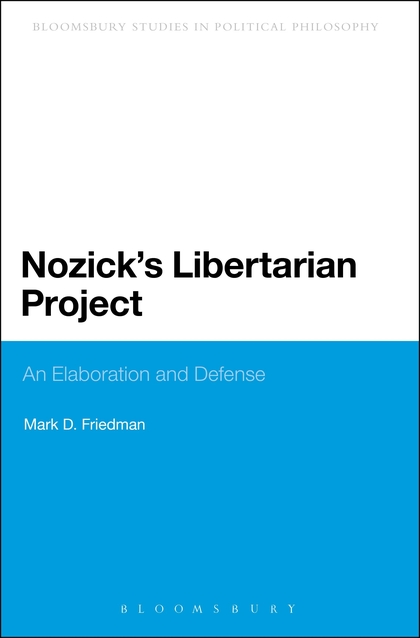In my last post, “Style and Substance in ASU,” I critiqued Barbara Fried’s 2005 essay “Begging the Question With Style: Anarchy, State and Utopia at Thirty Years.” An electronic version of Fried’s piece is available here: http://papers.ssrn.com/sol3/papers.cfm?abstract_id=523743. My post showed that Fried was deeply misinformed about or deliberately ignored what Nozick claimed for ASU and the substance of much of his argumentation. Moreover, her partisan attack on Nozick was rife with intellectual dishonesty and hypocrisy. Apart from these quibbles, it was a noble effort.
With the one exception described below, Fried’s essay was not a frontal attack on the principles Nozick articulated and defended in ASU. Rather, she sought to undermine them through the rather strange method of attacking his style, and specifically by identifying and describing the alleged rhetorical trickery that enables him to cleverly disguise the underlying weakness of his arguments. She thus sought to discredit his entire enterprise “on the cheap,” i.e. without offering any new or interesting reasons to reject any of his central principles.
As just mentioned, Fried departed from her analysis of Nozick’s “devious” style just long enough to offer her readers a single substantive objection to his reasoning. She claims to have noticed a startling inconsistency between Nozick’s insistence on a near-absolute prohibition on the coercion of competent adults in Parts I and II of ASU, and the discussion in Part III of his own conception of what would constitute a “framework for utopias” under libertarian principles. According to Nozick, “Utopia is a framework for utopias, a place where people are at liberty to join together voluntarily to pursue and attempt to realize their own vision of the good life in the ideal community but where no one can impose his own utopian vision upon others” (ASU, 312).
For the foreseeable future, the ultimate guarantor against the attempt by any group to impose its particular version of utopia will remain the nation state, and specifically the minimal (or “night-watchman”) state defended by Nozick earlier in ASU. The state will ensure that this utopia does not degenerate into a dystopia by protecting the right of individuals to exit any community that no longer satisfies his or her preferences. Moreover, a just state must allow its citizens a right of exit if they find another state more to their liking. However, within a framework that guarantees complete freedom of association and exit, Nozick upholds the right of particular communities to offer members a “take it or leave it” proposition.
In other words, while it would be morally indefensible, according to Nozick, for a state to violate the (libertarian) rights of its citizens on the grounds that they can always emigrate, it is perfectly acceptable for a particular community, operating within a libertarian framework that guarantees the right of exit, to do so. It is here that Fried espies what she considers a fatal contradiction in Nozick’s reasoning. Before examining her objection, let us review Nozick’s justification for his distinction between states and communities.
He offers two reasons. First, while our knowledge that others in our nation are doing things of which we disapprove may annoy us, this displeasure does not constitute, on familiar libertarian grounds, a violation of our rights. In contrast, in a face-to-face community “one cannot avoid being directly confronted with what one finds to be offensive. How one lives in one’s immediate environment is affected” (my emphasis). (ASU, 322)
Second, a community with a distinct lifestyle or social philosophy may well jointly own the property within which the group functions (e.g. a kibbutz), while a nation is substantially comprised of privately owned parcels. Thus, in a community the enforcement of uniform rules of behavior can be justified as the simple exercise of property rights, whereas in a nation each owner gets to determine how his land is used (ASU, 322-3). Here again, Nozick is drawing on commonplace libertarian concepts. If in my house I have a rigid rule against smoking, about which potential guests are informed well in advance, there is nothing improper in expecting them to either respect my policy or decline my invitation.
Fried finds the first argument utterly unconvincing because it supposedly rests on the dubious empirical claim “that we are not, as a matter of fact, offended by our far-removed citizens’ [conduct]. What, then, if the nightly news starts carrying regular features on polygamists in Utah?” In other words, given the right publicity, a majority of citizens may come to be just as offended by “unconventional” lifestyles or practices occurring in remote places as those living in face-to-face communities are by non-conforming behavior. And therefore, she says, on Nozick’s logic, but in clear contradiction of basic libertarian values, a majority should be entitled to enforce a cease and desist order against far-flung communities.
Interestingly, Fried does not even directly discuss Nozick’s second rationale concerning the right of an owner to set the ground rules governing his/her or its property. Instead, she seizes on a question that Nozick poses for further discussion about the rules that should apply when a single person or private entity does not own the property used by the community. Nozick asks whether under the libertarian framework he envisions the voters of a small village could outlaw the “things they find offensive in the public streets? May they legislate against nudity or fornication or sadism (on consenting masochists)?” (ASU, 323)
If so, he proceeds to question whether a majority of (egalitarian minded) voters could require everyone appearing on the public streets to wear “a badge certifying that he had contributed n percent of his income to the needy during the year, on the grounds that they find it offensive to look at someone not wearing the badge (not having contributed)?” Nozick, raises these questions but, as he is wont to do, declines to answer them. So, crows Fried, if Nozick “cannot see his way clear to explaining why offense at others’ unwillingness to aid the poor is not an adequate basis for compelling them to do so, then I think we have found a form of libertarianism that Rawlsians can make their peace with.”
I hope that my readers can, based merely on this summary, appreciate Fried’s gross intellectual dishonesty. A careful and even slightly sympathetic reading of Nozick’s initial argument should have made it crystal clear to her that the right to enforce compliance with community norms was not based on the offense taken by the majority of members, but on the fact that this behavior would interfere with the realization of the very purpose of the community. An example may help.
Imagine a monastic religious order that is dedicated entirely to contemplation, prayer and work. One of the fundamental norms of this community is total silence, other than as necessary for the performance of the order’s mission. Along comes a member who blares his favorite music all night and wishes to incessantly chat-up the other monks about the latest celebrity gossip.
Although the other members may be offended by such conduct, their desire to expel the non-conformist is not based on this psychological state, but on the obvious fact that his conduct is plainly preventing them from operating the monastery in accordance with its raison d’être. Since, he should have been aware of the group’s rules before joining, there is no injustice in requiring him to either abide by them or leave. Accordingly, Fried’s interpretation of Nozick’s argument in terms of a majority right not to be offended is almost incomprehensible.
We could multiply this example endlessly, e.g. the visitor to the nudist colony who wishes to “dress up,” but the point should be clear. Even within a libertarian framework for utopia the disparate communities comprising this universe have a right to enforce their particular vision of the good. Otherwise, the huge variety of alternatives available to those seeking the community that represents utopia for them, will be severely restricted, and the framework contemplated by Nozick will no longer serve its purpose.
Fried’s treatment of Nozick’s second argument is equally shabby. The fact that Nozick is (admirably) willing to acknowledge that his reliance on the familiar libertarian principle of “the property owner gets to set the rules” might lead to an unexpected result in cases where we are dealing with public space “owned” by governmental entities, does not undermine the main thrust of his argument. Nothing said by Fried challenges the basic principle that owners are entitled to control what is done on their premises, or the justice of utopias founded on this principle.
Fried simply assumes that if Nozick is stuck with the view that a political entity could justly enforce redistributionist policies by means of a badge requirement for appearing in public, this must be a huge intellectual embarrassment, because he is at the same time committed to the position that nations must allow its citizens to opt out of policies that violate libertarian rights. But within the context of his discussion of a framework for utopias, this is simply untrue.
It is important to note that when Nozick speaks of a jurisdiction enforcing a contribution to social justice as a condition of appearing in public he refers specifically to a “small village” (ASU, 323), rather than a town, city or one of the 50 states. This selection would suggest to a fair-minded reader that it is motivated by the idea that it is relatively easy to exit a small, egalitarian village for a neighboring laissez faire one, and if this is impossible, a nearby town or city or larger jurisdiction. And, remember, this discussion takes place within the context of his ideal framework for utopias, where he imagines that “a thousand flowers will bloom,” i.e. there will be a virtually unlimited range of lifestyle and social/political choices.
This assumption of ease of exit and the availability of alternate utopias distinguishes the justice of rules passes by “small villages” from the laws of nations, since within their existing population, even the most laissez faire amongst them have policies that are anathema to libertarians. I strongly suspect that if the world were to evolve in such a way as to guarantee relatively cost-free exit and entry between nations under a global libertarian umbrella (or if nations ceased to exist), and if the world offered the range of “mini-utopias” that Nozick contemplates, he would endorse the idea that any particular nation may justly offer a “take-it-or-leave-it” proposition. And, I fail to see why this position should be an embarrassment to him.
But, of course, Fried is anything but a fair-minded critic of Nozick. She in fact contemplates that in distinguishing the justice of rules enacted by communities and nations Nozick might have relied upon, in her words, “the practical difficulty (costliness) of exit from both communities and the practical availability of meaningful alternatives.” However, she cannot bring herself to concede that this very point is implicit in his discussion. Instead, she proceeds as if Nozick’s claim that we might potentially reach different conclusions regarding the justice of rules passed by villages and nations rests entirely on “whether we are in fact offended by our neighbors’ chosen lifestyle.” Even if we were to ignore Nozick’s second argument entirely, as shown above, this is a manifestly unfair characterization of his views.
In doing philosophy, we are expected to treat our ideological adversaries fairly, as judged by the standards of this discipline. Among other things, this requires us to avoid tearing down “straw men.” If our opponent’s arguments are susceptible to one plausible interpretation that renders them feeble and a second interpretation that makes them formidable, we are obligated to opt for the second reading. It is perhaps a measure of how powerful Nozick’s arguments are that his ideological foes must stoop to such blatant intellectual dishonesty to “rebut” them.







Mark,
I don’t know if you aware but A. John Simmons has an article in the same volume of Social Philosophy and Policy as that article by Fried in which he indirectly replies to Fried’s criticisms.
The article is here http://journals.cambridge.org/action/displayAbstract?fromPage=online&aid=275214&fulltextType=RA&fileId=S0265052505041130 and actually that whole volume of SPP (with almost all articles dealing with nozick) is freely available http://journals.cambridge.org/action/displayIssue?jid=SOY&volumeId=22&seriesId=0&issueId=01
Hi Rajiv,
Thanks for pointing this out. I had indeed read this article in preparation for my book, but since Simmons does not specifically mention Fried’s critique, I hope I can be forgiven for not immediately making the connection. I quickly re-read Simmons’ essay, and agree that it basically supports Nozick’s idea that under the framework of a protective libertarian “umbrella,” illiberal communities are not unjust, since there is a right of exit.
As argued in my post, Fried’s criticism of Nozick is based on a (deliberate?) misreading of his actual argument–a tactic his ideological opponents resort to all too often.